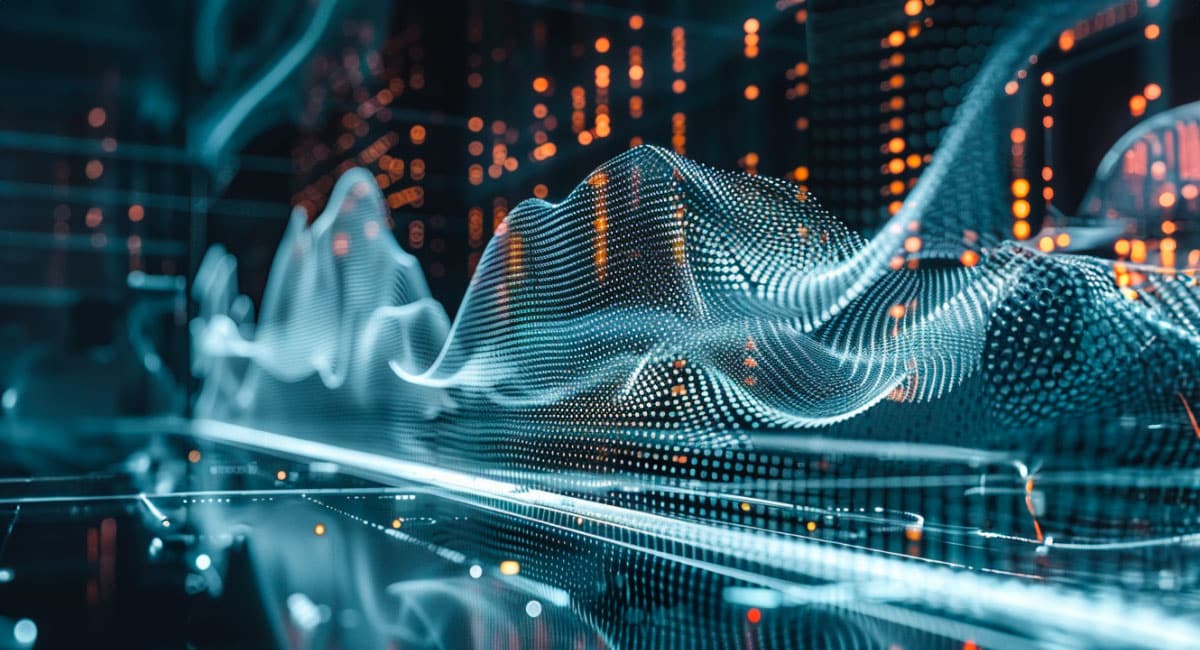What is Data Hydration?
Data hydration is the process of importing data into an object. It’s also known as data lake hydration. When an object is waiting to be filled with data, it is “waiting for hydration.” If the object is filled with some data, but not all of it, it’s “partially hydrated.”
Data hydration can come from a data lake or any other data source. A data lake is a term used to describe a large and centralized repository that stores vast amounts of structured and unstructured data. It holds raw data in its original format, without predefined schemas or organization.
Data hydration is bigger than simple extraction and storage. It also includes the migration of data into the correct place and format so it can be used properly.
This is an important process, especially when you consider all of the unique sources of data these days, such as SaaS applications, on-premise business data, social media sites, and even IoT sensors like your thermostat or refrigerator.
Understanding Data Hydration
The lifecycle of data begins with its source. Data can originate from diverse channels such as databases, APIs, IoT devices, social media platforms, or other data lakes.
Once the data is collected, it undergoes a transformation process to ensure compatibility with the target system. This includes cleaning, formatting, and structuring the data to fit the desired structure or schema.
After the initial preparation, the data is ready to be imported into an object or system. This process may involve mapping the data to specific fields or attributes within the object, ensuring a proper fit for further processing and analysis.
Complete hydration occurs when the object is filled with the appropriate data, ready to be used for various purposes. This could involve feeding the object into a machine learning model, performing data analysis, generating reports, or supporting decision-making processes within an organization.

Methods and Mechanics of Data Hydration
Selecting and filling objects with the appropriate data involves a few key steps:
- Data Categorization: It is essential to categorize data based on its type, such as customer data, financial data, or product data. Categorization helps in identifying the relevant objects and determining where and how the data needs to be hydrated.
- Mapping Data: Once data is categorized, it needs to be mapped to the appropriate fields or attributes within the objects. This ensures that the data is properly aligned and can be effectively utilized for analysis and decision-making.
- Format Conversions: In some cases, data may need to be converted or transformed to fit the required format of the objects. This could involve converting data from one file type to another or reformatting data to match specific field requirements. Format conversions ensure compatibility and seamless integration.
How do you select and fill objects with relevant data? You have a few options. The method you choose depends on the specific requirements and context of the organization. Here are some common methods of data hydration and their applications:
1. Batch Processing
This method involves importing large volumes of data in batches. It is commonly used when dealing with historical data or when data updates are not required to be real-time. Batch processing is suitable for scenarios where data can be processed and imported periodically, such as nightly or weekly data updates.
2. Real-time Streaming
Real-time streaming is used when immediate data ingestion and hydration are necessary. It involves a continuous flow of data from streaming sources, such as sensors, social media feeds, or live transactions. This allows organizations to act upon data in real-time, enabling real-time analytics, monitoring, and decision-making.
3. Change Data Capture
Change Data Capture (CDC) focuses on capturing and processing only the changes made to data rather than the entire dataset. This method is beneficial when dealing with rapidly changing data, reducing processing time and resource requirements. CDC ensures that only the necessary changes are propagated to the objects, optimizing efficiency.
Cloud Migration and Big Data Processing
It’s no surprise that organizations are increasingly adopting cloud-based solutions for data storage and processing. This transition has implications for storing and processing big data on cloud platforms. Here are the key benefits.
- Cloud platforms provide the ability to scale resources up or down based on demand. This allows organizations to handle growing volumes of big data without the need for significant upfront investments in hardware and infrastructure.
- With cloud storage, organizations only pay for the resources they use. This is a big cost savings compared to maintaining on-premises data centers.
- Cloud storage lets anyone access data from anywhere, which facilitates seamless collaboration among teams and stakeholders.
However, there are considerations to keep in mind when using cloud storage for big data:
- You must ensure proper data encryption, access controls, and adhere to regulations to protect your data from unauthorized access.
- Transferring large volumes of big data to the cloud can be time-consuming and dependent on network bandwidth.
- It is crucial to have flexibility and consider multi-cloud or hybrid cloud strategies to avoid dependency on a single vendor and enable smooth migration or integration with other platforms or systems.
SaaS Applications and Data Hydration
SaaS applications often play a big role in data hydration strategies. They are valuable sources of data that can be integrated into the overall data ecosystem.
For instance, Salesforce (a CRM) stores customer data such as contact information, sales history, and interactions. By incorporating this data into the data hydration process, Salesforce users gain a comprehensive view of their customers. This data can be used to inform personalized marketing, sales, and support initiatives.
Similarly, applications like Workday (an HR management system) contain employee information, organizational hierarchies, and performance data. Integrating this data into the data hydration strategy ensures up-to-date employee records and facilitates workforce analysis and planning.
Moreover, SaaS applications have the ability to connect with social media and IoT sensors. Social media platforms generate vast amounts of user-generated content that can offer insights into consumer sentiments, trends, and brand perception.
IoT sensors provide data on machine performance, environmental conditions, customer behavior, and more. Integrating data from these sources enhances the overall data hydration process by incorporating real-time and contextual information.
Furthermore, you can benefit from merging off-premises (cloud-based) and on-premises (in-house) data sources. Combining these data sources can give you a holistic view of your data, which leads to good analysis, reporting, and decision-making.
You also get the benefits of both environments: Cloud platforms provide scalability, accessibility, and on-demand resources, while on-premises systems offer control, security, and compliance.

Advanced Data Hydration Techniques
Now that you understand what data hydration is and how it works, let’s talk about some advanced techniques that organizations use to enhance the process. These techniques can be particularly valuable when integrating structured and unstructured data into AI engines.
- Entity Resolution: Entity resolution involves reconciling duplicate or similar entities in a dataset. This eliminates redundancy and improves data accuracy.
- Text Extraction and NLP: Natural Language Processing (NLP) techniques can extract relevant information from unstructured text data, such as emails, customer feedback, and social media posts. This extracted information can then be linked to structured data, providing valuable context and insights.
- Data Augmentation: This involves generating additional synthetic or semi-synthetic data based on existing datasets. This technique can help address data scarcity issues and improve model performance by increasing the diversity and volume of training data.
- External Data Integrations: Integrating external data sources, such as public datasets, industry databases, or third-party APIs, can enrich existing data and provide additional context. This can help fill gaps in knowledge and enhance the accuracy.
- Machine Learning-based Data Imputation: Machine learning algorithms can be used to predict missing values in a dataset, which helps you impute missing data points. This technique can be useful when dealing with incomplete datasets and ensures that AI models have complete information for making accurate predictions.
- Hadoop-as-a-Service: HaaS environments like Amazon EMR and Cloudera Altus provide managed Hadoop clusters in the cloud so you don’t have to maintain your own infrastructure. These platforms offer scalability, cost-effectiveness, and simplified management, making them ideal for handling big data workloads.
Tools and Interfaces for Data Hydration
There are plenty of tools and interfaces that can assist the data hydration process, simplifying workflows, and enhancing collaboration between users and IT professionals.
No-code or low-code platforms are one category of tools that streamline data hydration. These platforms offer simple interfaces and pre-built components that allow you to design and deploy data integration workflows with minimal coding knowledge.
Here are some practical examples of no-code or low-code platforms for data hydration:
- Building a data pipeline to extract customer data from a CRM system, transforming it, and loading it into a data warehouse for analysis.
- Integrating data from various social media platforms, extracting relevant information, and combining it with internal data sources to gain insights into customer sentiment and behavior patterns.
- Connecting IoT sensor data streams to a cloud platform, processing and aggregating the data, and making it available for real-time analysis and visualization.
With these kinds of tools, you can simplify and streamline the data hydration process, reducing the dependency on complex coding and enabling collaboration.

Best Practices for Data Hydration
Effective data hydration requires a strong foundation in data governance, security, compliance, and continuous optimization. Let’s go over some best practices that will ensure the success and integrity of your data hydration project.
1. Establish Clear Data Governance
Implementing a robust data governance framework is crucial. Clearly define roles, responsibilities, and processes related to data management, ensuring data quality, integrity, and consistency throughout the hydration process. This involves standardizing data formats, metadata management, and establishing data strong governance policies.
2. Ensure Data Security and Compliance
Data security and compliance are paramount when handling sensitive or confidential data. Take advantage of appropriate security measures, encryption protocols, and access controls to protect your data during extraction, transformation, and loading. Additionally, ensure compliance with relevant regulations and data protection laws, such as GDPR or CCPA.
3. Monitor and Evaluate Performance
Regularly monitor the data hydration process to identify bottlenecks, performance issues, or data inconsistencies. Use monitoring tools and establish key performance indicators (KPIs) to assess the efficiency and effectiveness of the process.
4. Optimize the Hydration Workflow
Continuously optimize the process to improve efficiency, reliability, and accuracy. This involves analyzing data dependencies, identifying opportunities for parallel processing and data partitioning, and implementing data caching or staging techniques.
5. Conduct Thorough Testing
Test the data hydration pipeline comprehensively before deploying it into production. Validate data mapping, transformations, and overall functionality to ensure the accuracy and integrity of the hydrated data. Testing helps identify any issues early on.
6. Document and Communicate
Maintain clear documentation of the data hydration process, including data lineage, transformation rules, and metadata definitions. This documentation aids in knowledge transfer, troubleshooting, and collaboration among different stakeholders involved in the project.
The Future of Data Hydration
As technology continues to evolve, the future of data hydration holds exciting possibilities. Here are some trends to consider:
Growing Integration of Cloud Services
Cloud platforms will continue to play a pivotal role in data hydration. Advancements in cloud capabilities will give you access to more powerful and scalable infrastructure. This will allow for faster and more efficient data processing and hydration.
AI and Automation
Artificial intelligence’s (AI) impact automation on data hydration processes will be significant. AI-powered algorithms can automate data mapping, transformation, and quality checks. AI will help you identify patterns, anomalies, and trends in real-time, accelerating the data hydration process and making analysis and decision-making more effective.
Advanced Data Integration Technologies
Emerging technologies such as data virtualization, streaming data integration, and event-driven architectures will refine and accelerate the data hydration process. These technologies facilitate real-time data ingestion, provide near-instantaneous updates, and enable seamless integration between various data sources.
Data Hydration for Edge Computing
Data hydration will extend beyond traditional cloud environments with the rise of edge computing and IoT devices. Edge computing brings computation and data storage closer to the source of data generation. This will require new approaches to data hydration to ensure efficient and real-time ingestion of data from edge devices.
Emphasis on Data Privacy and Ethics
As data regulations evolve and consumer awareness around data privacy increases, it’s important to prioritize data privacy and ethics in your data hydration strategies. Implementing robust data anonymization techniques, adhering to privacy regulations, and ensuring transparent data practices will be crucial for maintaining public trust and compliance.
Unlock the Potential of Your Data
As you can see, data hydration is a crucial process for unlocking the full potential of your structured and unstructured data. By seamlessly integrating data types and making them accessible to your systems – including AI engines – you can make more informed decisions and gain a competitive advantage.




